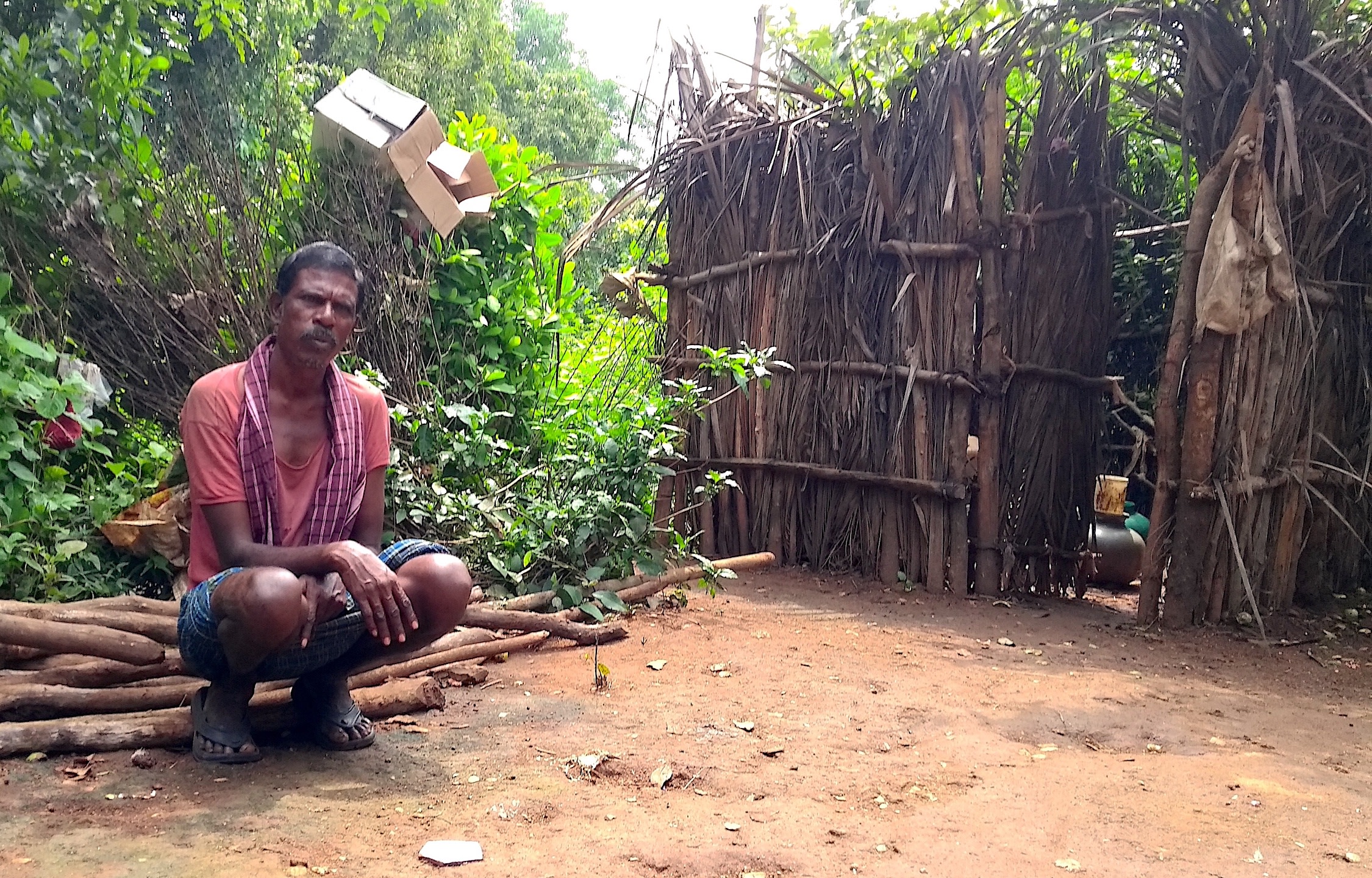 Listen to this article
•
15:34 min
Listen to this article
•
15:34 min
The path to the village I am visiting is surrounded by forest. Most of the walk is along a drying stream bed, at times deviating onto small paths created by the frequent footfall of people and animals. We are in the Biligiriranga Hills Tiger Reserve in Karnataka, named after the centuries-old Sri Biligiri Ranganathaswamy temple, and known for wildlife such as the sloth bear, tiger, leopard, gaur, dhole, and elephant. We walk in a single file, I am led by Nagesha and followed by Ranga, both born and brought up in the region. Ranga is a member of the Soliga tribe, the main ethnic group living in BR Hills.
Deep within the forest, is the settlement of Keredimbha podu. As we enter we see an archway of plastic bottles filled with stones dangling over our heads. I stop and look at it, puzzled, wondering what this thing is. Empty bottles of Maaza, mineral water, and beer cans, are filled with pebbles and stones and connected to each other by metal wire. Nagesha tells me these are warning systems created by the Soliga people living in the village. They are to deter elephants that frequently visit the settlements to raid farmlands for crops and orchards for fruit, to approach a nearby water body, or simply to travel through the area.

The rolling Biligiriranga Hills — popularly known as BR Hills — lie in southeastern Karnataka. The region holds a diversity of forest types due to its location between the Eastern and the Western Ghats. Cover Photo: Dhanush G/Shutterstock
When an elephant walks on the road or enters the village, especially at night, the bottles rattle and let locals know to be careful. I shake the string of bottles a bit; they sound like a child’s toy rattle. People come up with ingenious ways of living in a forest.
I hear a lot of other sounds too. Amidst birdsong and elephant rumbles, there are the voices of people. They tell us that their home has been a tiger reserve since 2011. We hear also about lantana, an invasive shrub that has spread to many forests in southern India and taken over paths in the forest. And how some trees in the forest do not bear many fruits anymore, and how they once used fire to maintain the vegetation in a certain way. These hills have held a diversity of flora, fauna, and humans for many years, living in close proximity to each other.

With every layer of environmental protection that the region has received, the locals have had to incorporate changes in their lives. Restrictions on management and use of the forest, deprivation of facilities such as tar roads and electricity, introduction of new development schemes — these are a part of the complex reality of living here.
Some locals have claimed rights to use and live in the forest through the Forest Rights Act of 2006, which recognises “traditional forest dwellers who have been residing in such forests for generations but whose rights could not be recorded”. Still, the ecology and the political economy has undergone considerable change in the last few years, and so the locals have found new means of livelihood such as opting for daily wage labour and growing coffee.

People in the Biligiriranga Hills live in an ever-changing space. In the past, abundant nellikai (amla/gooseberry), lichen, and forest honey were the main non-timber forest produce here. Medicinal plants and leafy greens were also collected while walking around in the forest. However, with thick lantana bushes, and restrictions on the use of fire to manage them, walking around the forest has become riskier. Add to that, the dominant narrative of protected areas as inviolate spaces, which drives our conservation efforts, especially in tiger reserves.
Now, where possible, many villages are surrounded by shrubs of coffee, which has a good demand in the market. Large coffee estates have been at the core of this forest for many decades, but coffee grown by the local people, the Soligas, is a comparatively new trend. Other forms of agriculture are difficult, as the crops are often raided by animals. People, especially the youth, also migrate outside now, looking for wage labour, coming back for important cultural events, and to tend to the land and home.
That day, while talking to a family in the village, we are asked if we would like to taste some fresh honey. Pieces of honeycomb soaked in thick, sweet honey are given to us. It is like liquid gold and tastes as good as it looks. This honey wasn’t harvested from a hive on the rocks or trees, it is from a bee box in the family’s backyard. The family has recently stopped harvesting wild honey, choosing to rear bees instead.
I think of life in a tiger reserve like a bonsai plant: beautiful but restricted by boundaries, with roots that cannot spread freely in their own soil. Yet, people continue to find new ways of living here, in the land inhabited by their community for generations, despite the uncertainties of powerful entities like the state and the market. Today, though the tiger thrives in this forest, it is only a small part of the Soliga’s lives. It is a bigger part of the institutions interested in conservation. An old temple still stands on a rocky hill, as does the old champaca tree next to the stream — called Dodda Sampige — that the Soligas worship. Both are now on the list of spots visited by tourists on weekends. There is no doubt this landscape is changing, morphing into an amalgamation of contradictions that require constant adaptation. One only hopes that the Biligiriranga Hills continue to remain the home of the Soligas and other communities who have their roots here.







